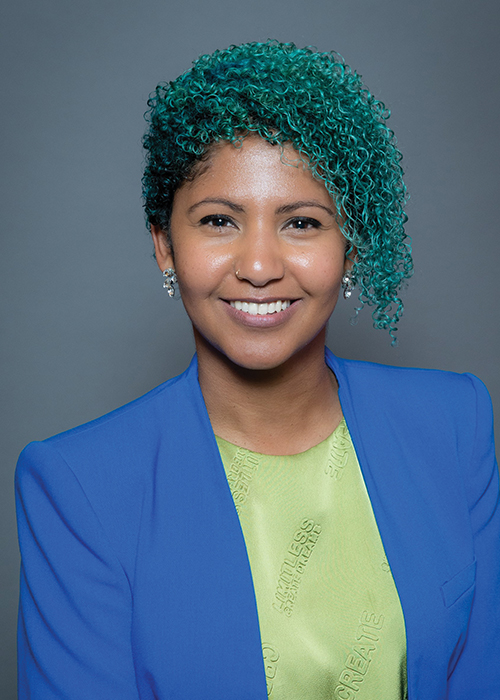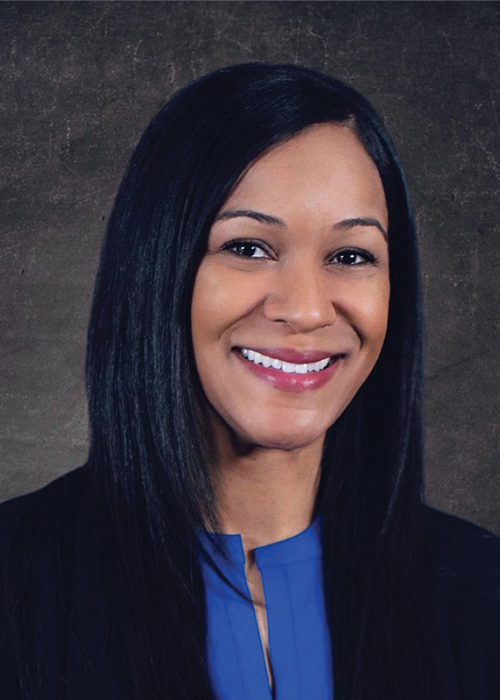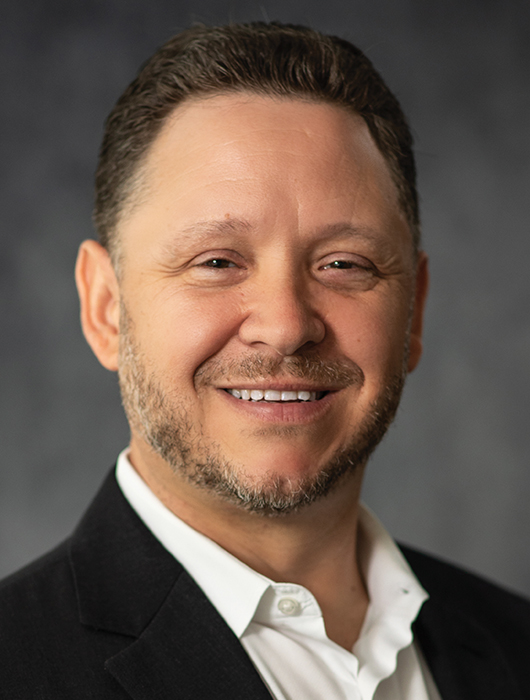Program administrators can engage
students to build organizational strength
By Elisabeth Boone, CPCU
In a Target Markets Professional Administrators Association presentation titled “Elevate Your Workforce: Accessing Student Talent,” Tandeka Nomvete, director of external engagement at the Spencer Educational Foundation, led a lively discussion about recruiting talent at the high school and college levels.
Panelists were Whitnee Dillard, executive director of the Big “I”’s National Invest Program; Tony Chimera, chief talent officer at Westfield Specialty; and Vionie Beaunissant, client service specialist at the Baldwin Group and MBA student at South Florida University.
“Let’s start our discussion at the high school level with Whitnee Dillard,” said Nomvete.
“The Invest program helps young people learn about insurance careers, and it also provides a first step into their overall understanding of insurance,” said Dillard. “Something that we are privileged with now that we weren’t when Invest started in 1970 is that a lot of states are including insurance education as a part of their financial literacy requirements.
“We encourage insurance professionals to visit our website (investprogram.org/careerstogo) and access a wealth of resources that you can download and present during school career days,” Dillard explained. “One presentation highlights the 49 different careers across insurance. All of these resources can also be customized as you see fit.”
Nomvete then shifted focus to creating awareness about career opportunities, especially in the program space. “Take the opportunity to visit the Invest site, which has numerous letters you can customize to fit your needs,” she advised. “You can send them to high schools in your area and follow up with a phone call to the principal to offer additional information and request an appointment.
“You’ll likely be given the opportunity to present your information directly to students; and if you have children in the school, ask them to help you promote your message to their peers,” Nomvete added. “Maybe you’ll get five minutes, or even 30 minutes, to present your information to middle school or high school students, just to plant that seed in their minds,” she asserted.
Nomvete asked how industry professionals can effectively engage students and teachers and develop a long-term partnership with the high school. Beaunissant responded with some simple advice: “Make a commitment to show up and be consistent.
“When I was in high school,” she added, “my teacher invited accounting professionals to visit our class and share information with us. That sparked my interest in accounting and enabled me to pursue a career in that industry.”
Providing students a meaningful connection is so important, Dillard said. “Invest has been around for so long because of its emphasis on humanizing our industry as opposed to its just being an insurance curriculum.”
“You can send (career information) to high schools in your area and follow up with a phone call to the principal … . You’ll likely be given the opportunity to present your information directly to students … .”
—Tandeka Nomvete
Director, External Engagement
Spencer Educational Foundation

College level
The conversation shifted to post-secondary students, “and we’ll start with Vionie because she’s currently in college,” Nomvete said. “Why do you think that most of the students in business fields are applying for jobs in industries other than insurance, like accounting, economics, or finance instead of insurance and risk management?”
“I think it’s a question of lack of exposure,” Beaunissant replied. “As an accounting student, I learned about organizations that encourage students to pursue careers in other fields, but not in risk management and insurance.”
Nomvete offered practical advice on connecting with colleges and universities that have insurance and risk management programs. “Reach out to Spencer!” she said. “We have connections with professors and students in all schools with RMI programs.
“For the schools that don’t yet have RMI programs, we can help them build risk management and/or insurance 101 courses,” she added. “We’d be happy to facilitate introductions for you to go on campus and talk about your careers in the program business. We also provide funding for professors so students can learn outside of the classroom. This way students can interact with working professionals and learn about internship opportunities in our industry.”
“Look at these students as future leaders and not as kids. They can even serve as your research and development arm for certain tasks. Also, if you’re not in a position to do an internship, mentorship goes just as far.”
—Whitnee Dillard
Executive Director
National Invest Program

Nomvete asked fellow panelists for ideas on engaging faculty and students to create a long-term partnership. Chimera responded: “We need to view this as an investment. Within our companies, we need to provide students with a true picture of the industry and create an internship program.
“We have a talent and an attraction problem, and we need to present students the opportunities available in our industry,” he added. “Getting to know the students is an effective way to convert them into employees. Be present and tell a compelling story about the industry.”
Practical counsel
On the next topic—best practices—Chimera advised: “If you’re on campus, be realistic about the possible outcomes. Don’t oversell the opportunities. And follow up, even if you have no opportunities. We can place students in other organizations.
“We have relationships with organizations like TMPAA, the Spencer Educational Foundation, Gamma Iota Sigma, WSIA, and other entities that do a lot of investment,” he added. “It’s our industry, not just our company. Get to know the students; if they participate in an internship program, you can learn from them as they’re learning from you.”
Said Dillard: “Look at these students as future leaders and not as kids. They can even serve as your research and development arm for certain tasks.


“Also, if you’re not in a position to do an internship, mentorship goes just as far,” she added. “You don’t have to have everything perfectly figured out, but the time you are connecting with a young person goes a long way, even if it’s not in an official capacity.
How should reps act when they call on students on the campus? “Be relatable, and don’t use Gen Z language,” said Beaunissant. “Be friendly and make it comfortable for students to engage with you. Be down to earth and authentic. Present yourself as someone who is willing to help—in fact, happy to help.”
Another question: What are some other ways to access potential future talent? “If you don’t have the bandwidth to connect with every high school and college in your area, consider investing in the organizations Tony mentioned,” Nomvete suggested. “Reach out to the Spencer Educational Foundation, Invest, and The Alliance CISR program. They can help with virtual presentations, and they can use donated funds to provide scholarships.”
“Be relatable, and don’t use Gen Z language. Be friendly and make it comfortable for students to engage with you. Be … authentic. Present yourself as someone who is willing to help—in fact, happy to help.”
—Vionie Beaunissant
Client Service Specialist
The Baldwin Group

What’s more, she continued, “We have a strong presence on LinkedIn, and we encourage you to interact with our social media posts. Every like, comment, and share can help us broaden our audience and reach more students.”
What is Chimera’s company doing to attract young people? “We’re active on the campuses and get to know the students. We have a regional strategy, and we do a lot of outreach; we offer webinars, mentoring, and virtual or live sessions in the classroom.
“We’re here to provide information to help students make good decisions, and ideally they’ll choose our industry,” he said. “We look for opportunities to celebrate our interns. When they start, we post their photos and information about where they come from.”

Forming a program
Where is a good place to start an internship program? “One of our needs as an industry is diversity on all levels,” Chimera responded. “Start small and solicit feedback. What outcome do you want?
“It’s important to be intentional about making that a good experience for the student,” he added. “With any early talent, tie them to someone in your organization whom they can go to with questions or problems. That’s probably going to lead to a successful outcome.”
“To create a meaningful experience, don’t give the interns busy work,” Beaunissant said. “Give them work that will contribute to your organization and that will be presented to clients. That challenges interns to be creative and come up with ideas that will benefit your organization.”
“There is a cost involved,” Chimera said. “What’s the benefit? We should look at it as an investment. Let’s say an intern works for you for 40 hours a week and you pay him or her $20 an hour. That’s $8,000. If you hire the individual, you’ll recoup that amount many times over. Our interns bring legitimate ideas and they’ll challenge things that a 20-year professional would never think of.”
“[W]e need to present students the opportunities available in our industry. Getting to know the students is an effective way to convert them into employees. Be present and tell a compelling story about the industry.”
—Tony Chimera
Chief Talent Officer
Westfield Specialty

“If you’re having trouble finding good candidates, you can reach out to us,” Nomvete said. “We have connections to colleges and universities across the U.S. and Canada. We can mention your internship opportunities in our newsletters and post them on LinkedIn. We can absolutely help you fill those roles.”
Note: Comments in this article have been edited for brevity and clarity.
The author
Elisabeth Boone, CPCU, is a freelance journalist based in St. Louis, Missouri.





